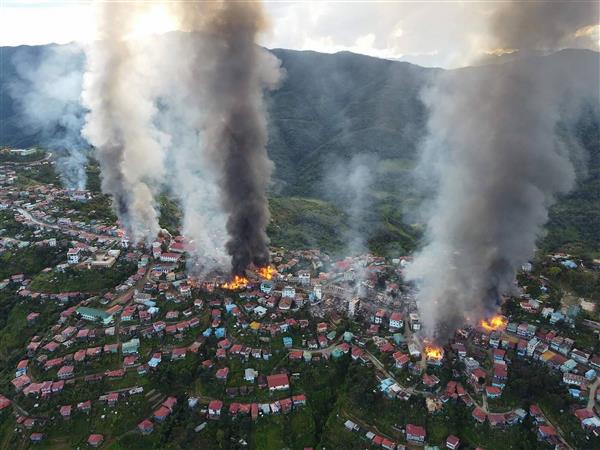Bangkok: More than 160 buildings in a town in northwestern Myanmar, including at least two churches, have been destroyed by fires caused by shelling by government troops, local media and activists reported Saturday.
The destruction of parts of the town of Thantlang in Chin state appeared to be the most extensive so far in the ongoing struggle between Myanmar’s military-installed government and forces opposed to it. The army seized power in February from the elected government of Aung San Suu Kyi, but has failed to quell the widespread resistance.
Human rights groups and UN experts have recently warned that the government is planning a major offensive in the country’s northwest, including Chin state, along with the regions of Magway and Sagaing. Residents of the rugged area have a reputation for their fierce fighting spirit, and have put up stiff resistance to military rule despite being only lightly armed with single-shot hunting rifles and homemade weapons.
There were no immediate reports of casualties from the fire, which started early Friday and burned through the night, according to reports.
The humanitarian aid agency Save the Children said its offices were in one of the buildings that “have been deliberately set ablaze”.
“The destruction caused by this violence is utterly senseless. Not only has it damaged one of our offices, it risks destroying the whole town and the homes of thousands of families and children,” said a statement from the London-headquartered agency.
Thantlang had already been largely abandoned due to previous attacks by government soldiers.
Eighteen other houses and a hotel were destroyed by fire set off by another shelling on September 18, and a Christian pastor was shot when he tried to help put out the blaze.
More than 10,000 residents then fled the town, some staying temporarily in nearby villages and others seeking shelter across the border in Mizoram, India. About 20 staff and children in care of an orphanage on the outskirts of the town are believed to be its only remaining residents.


